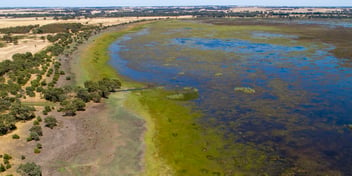Ultrasonic sound waves help manage algae
Drinking water taste and odour issues associated with blue green algae may be a thing of the past thanks to ultrasonic sound waves, with one Queensland utility trialing a new technology aimed at helping manage the impacts of blooms.
The new technology is being trialed by Seqwater at Poona Dam on the Sunshine Coast and initial results are promising.
Seqwater Catchment Water Quality Advisor Renee Hague said potential taste and blue green algae species are present in most South East Queensland dams all year round.
“Water Treatment Plant processes make sure the drinking water supplied to customers is safe and of high standards. However, taste and odour may still be present in drinking water following algae blooms,’’ Hague said.
“Our dams contain complex ecosystems alive with fish and other aquatic species, including different types of algae.
“Many of our dams are seasonally affected by the growth of these algae, which thrives in warm, dry conditions and when water in the catchment has high nutrient levels causing a bloom.
“When this occurs, blue green algae blooms can produce and release harmless natural compounds that can create a musty and earthy taste and odour.’’
There have been several algae blooms over the past few years that have directly impacted taste in some of the Sunshine Coast’s drinking water supply, Hague said.
Seqwater has engaged algal control specialists to investigate the use of ultrasonic technology as an environmentally-friendly and cost-effective blue green algae management measure.
Hague said the technology uses two solar-powered units emitting ultrasonic sound waves to inhibit the algae from forming intense blooms.
“The ultrasound waves create a sound layer in the top layer of water that directly impacts on the buoyancy of the algae. The algae cells sink to the bottom, where they are unable to photosynthesise and eventually die due to lack of light,” she said.
Hague said the success of the trial could result in significant savings to water treatment costs and improved drinking water quality for customers.
“During the trial period, weekly samples taken from Poona Dam, showed a dramatic decline in taste and odour compounds in the dam,” she said.
“As a result, we’ve integrated the permanent use of this technology at Poona Dam, with the potential of rolling out these units at other Seqwater dams prone to blue green algae blooms.”

